#Eleanor of Naples
Explore tagged Tumblr posts
Photo

Vere novo , priori jam mutato consilio , Alienora virgo regia , insignis facie , sed prudentia & honestate prestantior , futura Regina Sicilie , atque cum ea Nymphe obsequiis apte regalibus , accepta benedictione parentum , ab urbe Neapoli gloriosas discessit , per Calabriam , propter maris tedium , usque Regium iter agens : quam discedentem Neapolitane matres , quantum spectantes oculi capere potuerunt , effusis pre gaudio lacrimis affequute sunt.
Gregorio Rosario, Bibliotheca scriptorum qui res in Sicilia gestas sub Aragonum imperio retulere, I, p.456-457
Eleonora was born in Naples in the summer of 1289 as the tenth child (third daughter) of Carlo II lo Zoppo of Anjou, King of Naples, Count of Anjou and Maine, Count of Provence and Forcalquier, Prince of Achaea, and of Maria of Hungary.
Nothing, in particular, is known about her childhood, which she must have spent with her numerous siblings in the many castles of the Kingdom.
She is first mentioned in a Papal bull dated 1300 in which Boniface VIII annulled the marriage of 10 years-old Eleonora to Philippe de Toucy, Prince of Antioch and Count of Tripoli, (the contract had been signed the year before) on account of the bride’s young age and the fact that family hadn’t asked for the Pope’s dispensation.
Two years later, there were discussions of a match with Sancho, the second son (and later successor) of Jaume II of Majorca, but the engagement never occurred.
Finally, in 1302, Eleonora’s fate was sealed. On August 31st 1302 the Houses of Anjou-Naples and of Barcelona signed the Peace of Caltabellotta, which ended the first part of the War of the Sicilian Vespers and settled (or tried to) the problem of which House should have ruled over Sicily. Following this treaty, the old Norman Kingdom’s territory (disputed between the French and Spanish born ruling houses) was to be divided into two parts, with Messina Strait as the ideal boundary line. The peninsular part, the Kingdom of Sicily, now designed as citra farum (on this side of the farum, meaning the strait, later simply known as the Kingdom of Naples ), and the island of Sicily, renamed the Kingdom of Trinacria, designed as ultra farum (beyond the farum).
The Peace of Caltabellotta stipulated that Angevin troops should evacuate the island, while the Aragonese ones should leave the peninsular part. Foundation of the peace would have been the marriage between princess Eleonora of Anjou and King Federico III (or II) of Sicily (“e la pau fo axi feyta , quel rey Carles lexava la illa de Sicilia al rey Fraderich, que li donava a Lieonor, qui era e es encara de les pus savies chrestianes, e la millor qui el mon fos, si no tant solament madona Blanca, sa germana, regina Darago. E lo rey de Sicilia desemparava li tot quant tenia en Calabria e en tot lo regne: e aço se ferma de cascuna de les parts, e que lentredit ques llevava de Sicilia; si que tot lo regne nach gran goig." in Ramon Muntaner, Crónica catalana, ch. CXCVIII). The pact dictated also that once Federico had died, the two kingdoms would be reunited under the Angevin rule. This clause won’t be fulfilled.
The bridal party had to wait until spring 1303 before setting off for her new country since sea storms had damaged part of the fleet and thus delayed the departure. The voyage had cost 610 ounces, where the Florentine bankers Bardi and Peruzzi were asked to advance the payment, and the groom pledged to repay them 140 ounces.
By May 1303, Eleonora and her companions arrived in Messina where she was warmly welcomed and where on Pentecost, May 26th, of the same year she got married to Federico in Messina’s Cathedral (“E a poch de temps lo rey Carles trames madona la infanta molt honrradament a Macina, hon fo lo senyor rey Fraderich, qui la reebe ab gran solemnitat. E aqui a Macina, a la sgleya de madona sancta Maria la Nova, ell la pres per muller e aquell dia fo llevat lentredit per lola la terra de Sicilia per un llegat del Papa, qui era archebisbe, que hi vench de part del Papa, e foren perdonats a tot hom tots los pe cats quen la guerra haguessen feyts: e aquell dia fo posada corona en lesta a madona la regina de Sicilia, e fo la festa la major a Macina que hanch si faes.” in Ramon Muntaner, Crónica catalana, ch. CXCVIII).
After the wedding, most of the bridal party returned to Naples, while the newlyweds proceeded to Palermo.
On July 14th 1305 Eleonora gave birth to the heir, who was called Pietro in honour of the child’s paternal grandfather, Pere III of Aragon. To celebrate his son’s birth, Federico III gifted his bride of Avola castle and the surrounding land, to which will be added the city of Siracusa (in 1314), Lentini, Mineo, Vizzini, Paternò, Castiglione, Francavilla and the farmhouses in Val di Stefano di Briga. This gift would mark the creation of the Camera reginale, which would become the traditional wedding present given to Sicilian Queen consorts, and eventually would be abolished in 1537.
Including Pietro, she would give birth to nine children: Costanza (1304 – post 1344), future Queen consort of Cyprus, Armenia and Princess consort of Antiochia; Ruggero (born circa in 1305 - ?) who would die young; Manfredi (1306-1317) first among his brothers to hold the title of Duke of Athens and Neopatras; Isabella (1310-1349) Duchess consort of Bavaria; Guglielmo (1312-1338) Prince of Taranto and heir to the Duchy of Athens and Neopatras following the death of his brother; Giovanni (1317-1348) Duke of Randazzo, Count of Malta, later also Duke of Athens and Neopatras and Regent of Sicily; Caterina (1320-1342) Abbess of St. Claire Nunnery in Messina; Margherita (1331-1377) Countess Palatine consort of the Rhine.
Through these donations Eleonora became a full-fledged vassal, and had to pay homage to her husband the King. Thanks to official documents, we get the idea that Eleonora tried to manage her lands as much personally as she could do, naming herself vicars, administrators, and granting tariff reductions. Federico indulged his wife as much as he could, although in some cases (like the management of the city of Siracusa) his will was the only one taken into account.
Despite almost every time she was unsuccessful, Eleonora fully embraced her role as mediator between the Aragonese and Angevins. For example, in 1312 her brother-in-law, King Jaume II of Aragon, asked her to dissuade her husband (Jaume’s brother) to ally himself with the Holy Roman Emperor Heinrich VII of Luxembourg since this alliance could generate new friction with the Angevin Kingdom, as well as with the Papacy (with the risk of stalling the Aragonese occupation of Sardinia). After the King of Aragon, it was Pope Clemente’s turn to ask Eleonora to convince Federico to make peace with Roberto of Anjou. In both cases, though, her conciliatory efforts didn’t work.
In 1321 she witnessed her son Pietro being associated to the throne and thus crowned in Palermo (“Anno domini millesimo tricentesimo vicesimo primo, dum Johannes Romanus Pontifex contra Fridericum Regem, & Siculos propter invasionem bonorum Ecclesiarum precipue fulminaret, Fridericus Rex primogenitum suum Petrum, convenientibus Siculis, coronavit in Regem, & patris obitum, inopinatum premetuens, & ut filius qui purus videbatur & simplex, ab adoloscentia regnare cum patre affuesceret patrisque regnando vestigiis inhereret […]” in Gregorio Rosario, Bibliotheca scriptorum ..., I, p. 482). Pietro’s coronation publicly violated the Treaty of Caltabellotta (as the Kingdom should have returned to the House of Anjou), causing the pursuing of warfare between Naples and Palermo. Once again Eleonora’s attempts at peace-making failed miserably, with her nephew, Carlo Duke of Calabria, refusing to even meet her in 1325, after he had successfully raided the outskirts of Messina.
The Queen didn’t have much luck in internal policy too as she failed to appease her husband and her protegé, Giovanni II Chiaramonte. After gravely wounding Count Francesco I Ventimiglia of Geraci (his brother-in-law and one of the King’s trustees), all that Eleonora could do was advise Chiaramonte to flee to avoid the death penalty.
Nevertheless, the Pope still hoped to use the Queen (who, at that time and alone in her Kingdom, was exempted from the Papal interdict) as mediator with her husband, promising to lift the excommunication in exchange for Federico’s backing down. Once again nothing happened.
On June 25th 1337 Federico III died near Paternò. He was buried in Catania since it was too hot for the body to be transported to Palermo (“Feretrum humeris nobiliores efferunt. Adsunt Regii filii, proceresque Regni. Exequias Regina, illustribus comitata matronis, prosequitur.” in Francesco Testa, De vita, et rebus gestis Federici 2. Siciliæ Regis, p.225). After the death of her husband, the now Dowager Queen turned to religion, following the example of those in her family who had consecrated themself to Christ (“At Heleonora certiorem fe de illa consolandi rationem inivit. Ipsa enim , ut Rex excessit e vita, ei, qui omnis consolationis fons est, fese in Virginum collegio Franciscanæ familiæ Catinæ devovit; in hoc Catharinan , & Margaritam filias imitata, quæ in ætatis flore, falsis terrestribus, contemptis bonis, Christ, cui fervire regnare est, in sacrarum Virginum Messanensi Collegio, de Basicò dicto, ejusdem Franciscanæ familiæ fese consecrarant; quod Collegium posteaquam Catharina fancte gubernavit, sanctitatis opinione commendata deceffit” in Francesco Testa, De vita..., p.226).
If Eleonora might have hoped to exert some kind of influence as many other Queen mothers did in the past and would do in the future over their weak-willed royal children, she would soon realize she had a powerful rival in the new Queen consort, her daughter-in-law, Elisabetta of Carinthia. Like Eleonora, the new Queen supported the Latin faction (a group of Sicilian noblemen who opposed the Aragonese rulership over Sicily, hoping the island would be returned under the influence of the Angevins instead). But, while Elisabetta had managed to raise the Palizzis to the highest positions at court, her mother-in-law still supported the Chiaramonte, making it possible for the exiled Giovanni II to return to Sicily, be pardoned by the King and see all his goods be returned. Soon though Chiaramonte resumed his personal feud against the Ventimiglia (also part of the Latin faction) and once again Eleonora's attempt to bring peace failed miserably. Only through Grand Justiciar Blasco II d'Alagona's intervetion, the crisis was averted.
In 1340, the Dowager Queen made a last attempt to appease the new Pope, Benedict XII. Unfortunately, the Sicilian envoys sent to Avignon to take an oath of vassalage (since Norman times Sicily theoretically belonged to the Papacy, who granted it to the Sovereigns who acted as Papal Legates) were treated roughly by the Pope, who declared Roberto of Anjou (Eleonora's brother) as Sicily's legitimate King.
Deeply distraught, the Dowager Queen resolved to definitely retire from public life. She spent what it remained on her life visiting the monastery of San Nicolo' d'Arena (Catania), joining the monks in their religious life. She died in one of the monastery's cells on August 10th 1341. Her body would be buried in the Church of San Francesco d'Assisi all'Immacolata (Catania), the construction of which she had personally promoted in 1329 to thank the Virgin Mary for protecting the city from one of many Mount Etna's eruptions.
Sources
AMARI MICHELE, La guerra del Vespro siciliano
CORRAO PIETRO, PIETRO II, re di Sicilia in Dizionario Biografico degli Italiani, Vol. 83
DE COURCELLES JEAN BAPTISTE PIERRE JULLIEN, Histoire généalogique et héraldique des pairs de France: des grands dignitaires de la couronne, des principales familles nobles du royaume et des maisons princières de l'Europe, Vol. XI,
FODALE SALVATORE, Federico III d’Aragona, re di Sicilia, in Dizionario Biografico degli Italiani, Vol. 45
GREGORIO ROSARIO, Bibliotheca scriptorum qui res in Sicilia gestas sub Aragonum imperio retulere, I,
KIESEWETTER ANDREAS, ELEONORA d'Angiò, regina di Sicilia, in Dizionario Biografico degli Italiani, Vol. 42
de MAS LATRIE LOUIS, Histoire de l'île de Chypre sous le règne des princes de la maison de Lusignan. 3
MUNTANER RAMON, Crónica catalana
Sicily/naples: counts & kings
TESTA FRANCESCO, De vita, et rebus gestis Federici 2. Siciliæ Regis
#historicwomendaily#historical women#history#history of women#herstory#eleanor of naples#frederick iii of sicily#house of aragon and sicily#people of sicily#women of sicily#aragonese-spanish sicily#myedit#historyedit
30 notes
·
View notes
Text


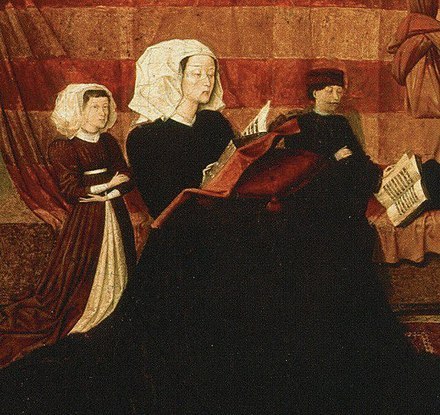





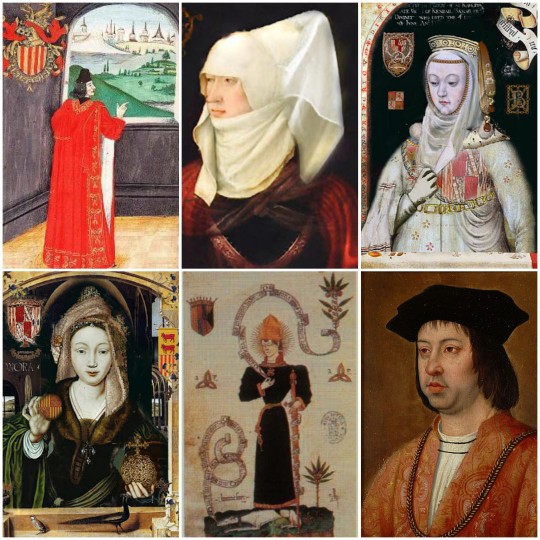
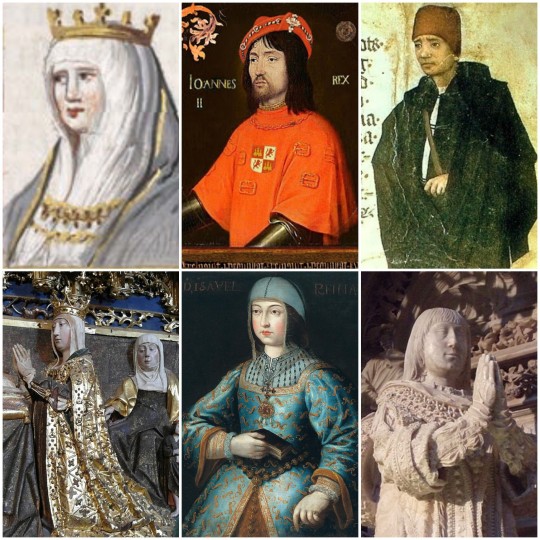
The Bastard Kings and their families
This is series of posts are complementary to this historical parallels post from the JON SNOW FORTNIGHT EVENT, and it's purpouse to discover the lives of medieval bastard kings, and the following posts are meant to collect portraits of those kings and their close relatives.
In many cases it's difficult to find contemporary art of their period, so some of the portrayals are subsequent.
1) Ferdinand I of Naples ( 1424 – 1494), son of Alfonso V of Aragon and Giraldona Carlino
2) Alfonso V of Aragon (1396 – 1458), son of Ferdinand I of Aragon and his wife Leonor de Albuquerque
3) Isabella of Taranto or Clermont (c. 1424 – 1465), daughter of Tristan of Clermont and Catherine of Taranto
4) Alfonso II of Naples ( 1448 – 1495), son of Ferdinand I of Naples and his wife Isabella of Taranto
5) Eleanor of Naples (1450 – 1493) & Beatrice of Naples (1457 – 1508), daughters of Ferdinand I of Naples and his wife Isabella of Taranto
6) Frederick I of Naples (1452 – 1504), son of Ferdinand I of Naples and his wife Isabella of Taranto
7) Ferdinand of Aragon and Guardato (before 1494–1542), son of Ferdinand I of Naples and Diana Guardato
8) Eleanor of Aragon (1402 – 1445), daughter of Ferdinand I of Aragon and Leonor de Albuquerque
9) I. John II of Aragon & Navarre (1398- 1479), son of Ferdinand I of Aragon and his wife Leonor de Albuquerque
II. Blanche I of Navarre (1385-1441), daughter of Charles III of Navarre and his wife Eleanor of Castile
III. Blanche II of Navarre (1424 – 1464), daughter of John II of Aragon and his wife Blanche I of Navarre
IV. Eleanor I of Navarre (1426 - 1479), daughter of John II of Aragon and his wife Blanche I of Navarre
V. Charles of Viana/ Charles IV of Navarre (1421- 1461), son of John II of Aragon and his wife Blanche I of Navarre
VI. Ferdinand II of Aragon & V of Castile (1452-1516), son of John II of Aragon and his wife Juana Enríquez
10)
I. Mary of Aragon ( 1403- 1445), daughter of Ferdinand I of Aragon and his wife Leonor de Albuquerque
II. John II of Castile (1405- 1454), son of Henry III of Castile and his wife Catherine of Lancaster
III. Henry IV of Castile (1425-1474), son of John II of Castile and his wife Mary of Aragon
IV. Isabella of Portugal (1428 - 1496), daughter of John of Portugal and Isabella of Barcelos
V. Isabella I of Castile (1451-1504), daughter of John II of Castile and his wife Isabella of Portugal
VI. Alfonso of Castile (1453-1468), son of John II of Castile and his wife Isabella of Portugal
#jonsnowfortnightevent2023#asoiaf#a song of ice and fire#canonjonsnow#day 10#echoes of the past#historical parallels#medieval bastard kings#bastard kings and their families#ferdinand i of naples#alfonso v of aragon#isabella of taranto#alfonso ii of naples#eleanor of naples#beatrice of naples#frederick i of naples#ferdinand of aragon and guardato#eleanor of aragon#john ii of aragon#blanche i of navarre#blanche ii of navarre#eleanor i of navarre#charles of viana#ferdinand ii of aragon#mary of aragon#john ii of castile#henry iv of castile#isabella of portugal#isabella i of castile#alfonso of castile
10 notes
·
View notes
Text
City of Ladies: the game

This post is based on a discussion with @lilias42. The idea was to imagine what an all-women Civilization-like game would look like. Would that be even possible?
This was done for fun, my choice of leaders is in no way a political statement. My goal is to showcase amazing historical ladies. I couldn't include everyone, so some choices were made. Let's go!
Angola: Njinga Mbande
Arabia: Samsi/Al-Khayzuran
Byzantine Empire: Irene of Athens/Theodora the Armenian/Theodora Porphyrogenita/Eudokia Makrembolitissa/Anna Dalassene
Carthage: Elissa-Dido
China: Fu Hao/Queen Dowager Xuan/Wu Zetian/Empress Liu
Celts: Boudica/Cartimandua
Denmark: Margaret I of Denamrk
Egypt: Merneith/Ahhotep I/Hatshepsut
England: Seaxburh of Wessex/Æthelflæd of Mercia/Empress Matilda/Eleanor of Aquitaine/ Elizabeth I
France: Blanche of Castile/ Emma of France/Brunehilda/Fredegund/Anne of France
Georgia: Tamar of Georgia
Germany: Theophanu Skleraina/ Matilda of Quedlinburg
Greece: Laskarina Bouboulina
Inca: Mama Huaco/Chañan Cori Coca
India: Rani Lakshmibai/Rudrama Devi/Didda of Kashmir/Ahilyabai Holkar
Italy: Matilda of Tuscany/Joanna I of Naples/Caterina Sforza/Lucrezia Borgia
Japan: Himiko/Empress Suiko/Empress Jito/Hojo Masako
Korea: Seondeok/Jindeok/Empress Myeongseong
Macedonia: Olympias/Eurydice I of Macedon
Maya: Lady K'abel/Wak Chanil Ajaw/ Lady K’awiil Ajaw
Mongolia: Sorghaghtani Beki/Mandukhai Khatun
Nigeria: Amina of Zaria
Nubia: Amanirenas/Amanitore
Ottoman Empire: Hürrem Sultan/Kösem Sultan
Persia/Iran: Atossa/Boran/Qutlugh Turkhan
Poland: Jadwiga of Poland
Roman Empire: Agrippina the Elder/Julia Domna
Russia: Catherine the Great/Elizabeth of Russia
Scythians/Sarmatians: Tomyris/Sparethra/Amage/Zarinaia
Senegal: Ndaté Yalla Mbodj
South Africa: Mmanthatisi
Spain: Urraca of León and Castile/Isabella I of Castile
United States of America: Harriet Tubman
+indigenous nations and their leaders such as : The Lady of Cofitachequi/ Weetamoo (Wampanoag)/Nonhelema (Shawnee) / Bíawacheeitchish (Apsáalooke)/Pretty Nose (Arapaho)
Vietnam: The Trưng sisters
Yemen: Arwa al-Sulayhi/Asma bint Shihab
19 notes
·
View notes
Text
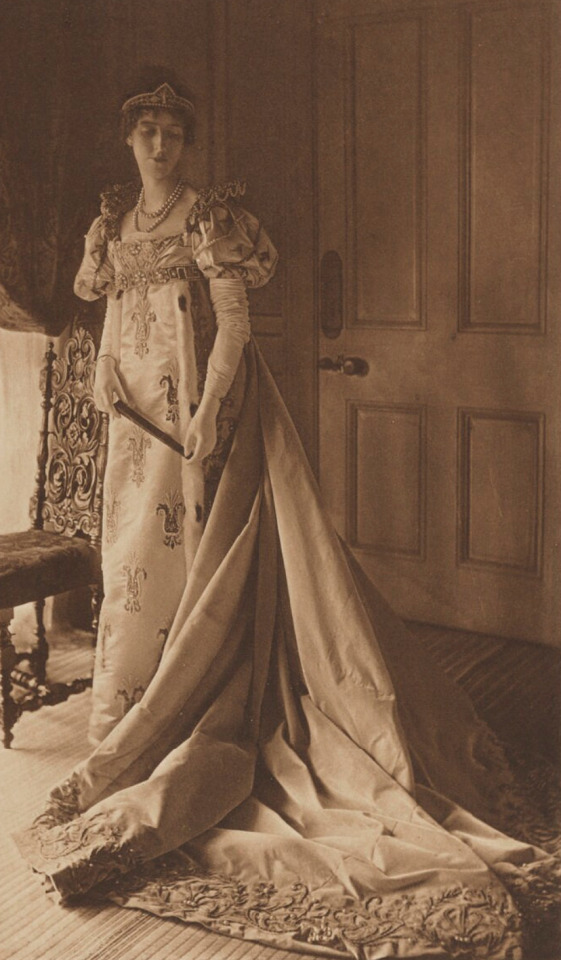
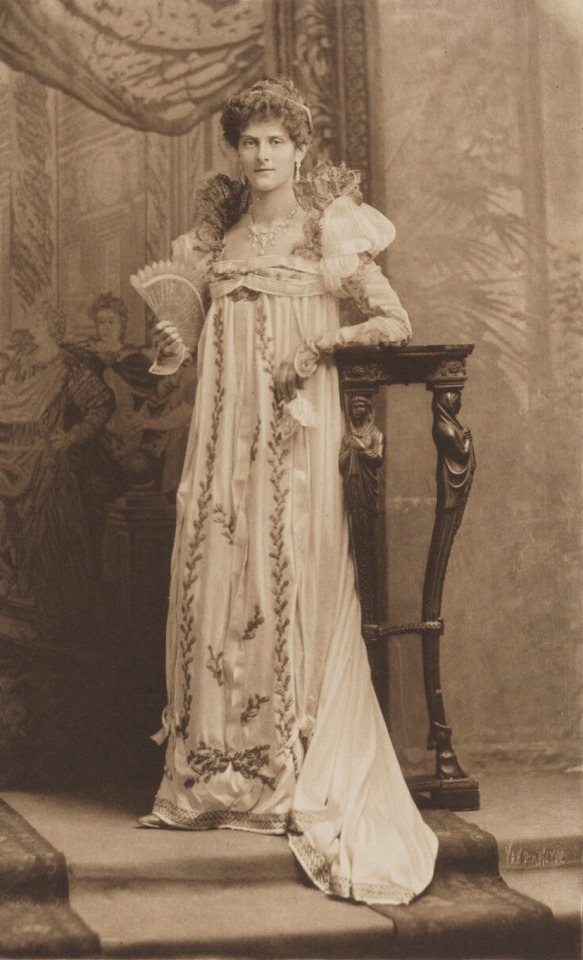
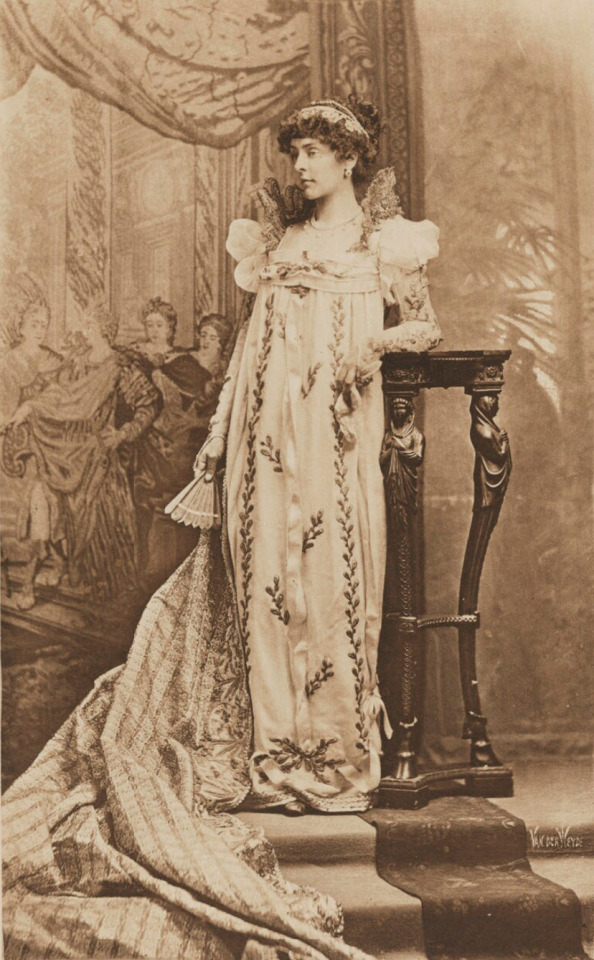



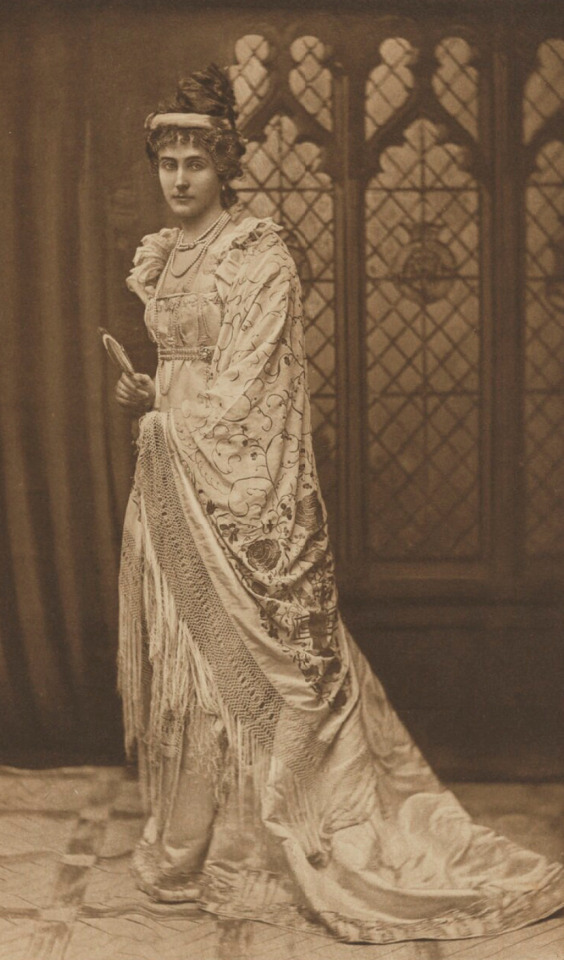

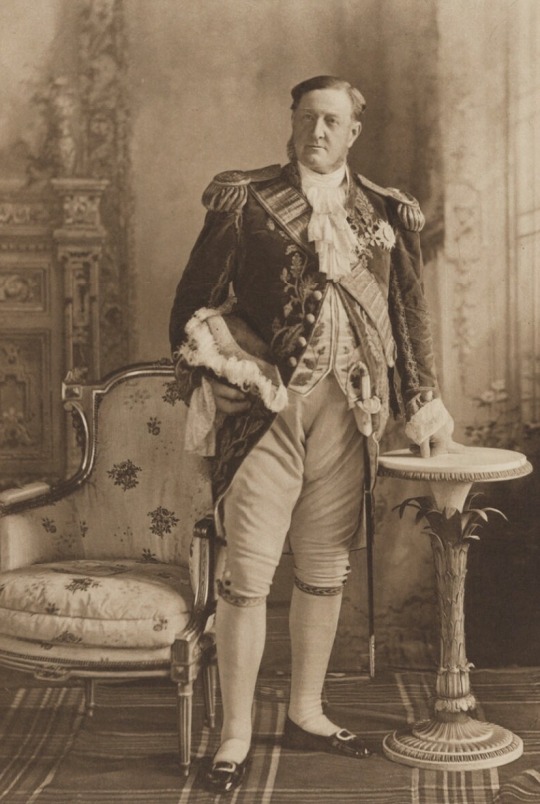

Costumes of Napoleonic figures at the Devonshire House Ball of 1897
1. Aileen May (née Wyndham-Quin), Countess of Meath as Hortense de Beauharnais, Queen of Holland
2. Princess of Löwenstein-Wertheim-Rosenberg (née Countess Josephine Kinsky) as Princess Pauline Bonaparte Borghese
3. Thérèse (née Kinsky), Countess Clary-Aldringen as Caroline Bonaparte Murat, Queen of Naples
4. Florence Anne (née Cole), Lady Delamere as Hortense de Beauharnais
5. Sir Charles Edward Cradock-Hartopp, 5th Bt as Napoleon I; Millicent Florence Eleanor (née Wilson), Lady Cradock-Hartopp (later Countess Cowley and Mrs Duberly) as the Empress Josephine
6. Lord Arthur Vincent Hay; William George Montagu Hay, 11th Marquess of Tweeddale; Candida Louise, Marchioness of Tweeddale as the Empress Josephine
7. Kathleen (née Douglas-Pennant), Viscountess Falmouth as Madame Recamier
8. Maria Henrietta Sophia Chaine (née Phipps) as Madame Sans Gêne
9. Henry Chaplin, 1st Viscount Chaplin as Marshal Lefevre
10. Catherine Dorothea Mary Grosvenor (née Simeon) as Marie Louise
#Devonshire House Ball of 1897#Devonshire Ball of 1897#ball#1890s#1897#napoleonic era#napoleonic#napoleon bonaparte#first french empire#french empire#Hortense de Beauharnais#pauline bonaparte#Caroline Bonaparte#josephine bonaparte#Marie Louise#Madame Recamier#Marshal Lefevre#costumes#costume#fashion history#historical fashion#Napoleon#Madame Sans Gêne#19th century#france#history#Devonshire#England#empire#empire style
97 notes
·
View notes
Text
10 Jewish Women from History Part 2
Shushandukht (4th to 5th centuries, Persia)
Jewish wife of a Sasanian emperor and mother of another. She was said to be the daughter of an Exilarch. She reputedly created the Jewish neighborhoods of Jouybareh in Isfahan and also communities in Susa and Shushtar. She is believed to be fictional by some.
Benvenida Abrabanel (1473-1560s, Italy)
A Sephardic philanthropist, banker, and businesswoman mentioned in literary, rabbinic, legal, and archival sources. Born to a prominent Spanish family, the Abravanel family, she received an education in both Jewish and secular subjects. Following the Expulsion of Jews from Spain in 1492, her family moved to Naples, where she became the tutor of Eleanor of Toledo. After the Holy Roman Emperor declared an expulsion of Jews in 1533, she co-protested and managed to get the order postponed by ten years. She and her family eventually moved to Ferrara. After her husband's death, she was made heir to almost all of his property, and she took over his business affairs, opening five banks in Florence.
Shlomtzion (1 century BCE, Judea)
A regnant queen of Judea, and the wife of Aristobulu I and Alexander Jannaeus. She ruled for nine years in the times of the Hasmonean dynasty. On his deathbed, Alexander trusted the government to his wife instead of his sons. She installed her eldest son as high priest and reestablished the Sanhedrin, and protected the Pharisees. Judea enjoyed much prosperity under her reign.
Licoricia of Winchester (1200s-1277, England)
An English Jewish businesswomen, described as the most important Jewish woman in medieval England. She was a moneylender, and appeared to have had a close relationship with King Henry III. She first appears in records from 1234 as a young widow with three sons and a daughter. In 1242, she married her second husband, who was known as the richest Jew in England. After her husbands death, she was detained by the king so that he could acquire part of her husband's estate; however, she repurchased his estate for 5,000 marks. Over the next thirty years after she was released, she became a highly influential businesswoman.
Esther Handali (?-1588, Ottoman Empire)
A Sephardic Jew reportedly from Jerez de la Frontera in Spain, she was married to a Jewish merchant who sold products to the Ottoman Imperial Harem. Due to the separation of the sexes, she would enter the harem as an agent for her husband. When she was widowed, she took over her husband's business. She was kira, or agent, of Nurbanu Sultan from at least 1566 onward, after Nurbanu became the favored consort of the sultan. She was trusted with political and diplomatic matters, including acting as intermediary between Nurbanu and Catherine de' Medici, as well as contacts in the Republic of Venice. She earned an enormous fortune, and was a benefactor to the Jews of Istanbul, especially widows and orphans and victims of the 1969 fire.
Esperanza Malchi (?-1600, Ottoman Empire)
A Jewish businesswoman in the Ottoman Empire and agent of Safiye Sultan. Reportedly from Italy, she acted as an agent for her husband, a Jewish businessman, in the Ottoman harem. It's difficult to separate her from Esther Handali since their careers overlap. Esperanza was trusted with political and diploamtic matters such as correspondence between Safiye and foreign powers, including the Queen of England.
Qasmuna (11th or 12th CE, Andalusia)
A poet from medieval Andalusia, and the only female Arabic language Jewish poet from the region. Three poems of her have survived. The most famous one is about how she looked in the mirror and decided she had reached the time of marriage.
Sarah of Yemen (6th century CE, Yemen)
A female composer of pre-Islamic Arabic poetry. She was potentially a member of Banu Qurayza, a Jewish tribe which lived in northern Arabia and was one of the major three Jewish tribes, along with Banu Qaynuqa and Banu Nadir.
Wife of Dunash ha-Lebi ben Labrat (920/925-after 985, Morocco or Spain)
Wife of a medieval Jewish commentator, poet, and grammarian from the Golden age of Jews in Spain. She is believed to be the author of a poem on Dunash's exile, making it the only known medieval Hebrew poem written by a woman.
Henrietta Szold (1860-1945, Baltimore)
Born in Baltimore, Maryland, she was the daughter of a rabbi and the eldest of eight daughters. Educated in Jewish studies, she edited Professor Marcus Jastrow's Talmudic Dicitonary, and attended lectures at Johns Hopkins and the Peabody Institute. She also studies at JTS, and studies in the rabbinic school on the promise she would not seek ordination, as the rabbinic school was restricted to males. A religious Zionist, she and six other woman eventually founded Hadassah, the Women's Zionist Organization of America. She funded hospitals, a medical school, soup kitchens, and other services for both Jewish and Arab inhabitants of Mandatory Palestine. In 1933, she immigrated there and helped run Youth Aliyah, an organization that saved 30,000 Jewish children during the Nazi regime. She also supported Brit Shalom, a small organization dedicated to Arab-Jewish unity.
#jewish#jewish women#jewish women's history#feminism#jumblr#there's so little history on Jewish women but for those that are recorded. they're badass.
11 notes
·
View notes
Note
Hi so I have a couple questions on young Henry VIII and Henry VII that I haven't seen addressed in any Henry VII biographies. First do we know why Henry VII didn't marry again to try to have more sons after Arthur and EOY died? Was it just because of his grief over the loss of his wife do you think? Or something else?
Also why didn't Henry VII marry Henry VIII to someone before he himself died? I know they originally got the papal dispensation for Catherine of Aragon to marry young Prince Henry but than the betrothal was broken off after Queen Isabella died. I believe Henry VII began looking into a betrothal with Eleanor of Austria (her niece) and Queen Juana and Philip the Handsome's daughter after that. Do we know why he didn't pursue this further? This seems like it would have been a more ideal match given the similarity in their ages.
Hello! Sorry for taking so long to reply, I haven't had much access to my computer after working hours. The answer to your questions are kind of complex-y. Henry VII did try to marry after Elizabeth of York died, though closer inspection to what evidence we have is that he took at least a year and a half before considering taking another wife (the diplomatic correspondence also seems to coincide with the period when colourful clothes returned to his wardrobe). We don't have access to his thoughts and motivations — we don't know if his council persuaded him to overcome his grief or if he made up his mind himself after overcoming a period of mourning — but the main motivation for remarriage seems to have been diplomatic/trade alliances and economic advantages, far more so than companioship or even having new children.
Henry could have easily have married Ferdinand of Aragon's niece (the dowager queen of Naples) but the advantages she could have brought in terms of dowry and pre-existing dower, trade deals and diplomatic alliances must not have been very high. He seems to have been far more interested in marrying Margaret of Austria, dowager Duchess of Savoy and the Holy Emperor's only daughter. Their marriage would have been part of an incredibly lucrative trade deal with Burgundy (as negotiated with her brother Philip the Handsome before he died) and would have brought Henry closer to her charge, her nephew the future Charles V who was to rule Burgundy AND Spain, and who Henry envisioned for his own daughter Mary.
Another alternative that was of interest to Henry was Juana of Spain who, again, would have brought him closer to her son Charles and who could maybe even bring him the quasi-regency of Spain if Henry was successful enough in divesting her father Ferdinand, who by that time Henry was at odds with (Henry did enquire into Ferdinand's control grip in Spain and whether he was still popular there). Henry pursued Juana's hand at the same time that he pursued Margaret of Austria's so I disagree when historians say he was truly 'in love' with either of these women.
All of this is to say that diplomatic game of chess seems to have been of far more interest to Henry than having other heirs, otherwise he could have easily accepted Ferdinand's niece in 1504 and gotten new children by 1505/6. Having new heirs also seems at odds with his pursuing of Margaret of Austria who had been married twice (technically thrice but the first marriage wasn't consummated) and had not have living issue despite those marriages. Margaret even wrote to her father expressing her fear that her inability to have children would displease a new husband, but surely Henry must have been aware of her record and decided that the other economic and diplomatic advantages of that union would be enough.
This is why I don't agree when historians say Henry VIII got his all-consuming fear of having no heirs from his father when that father seems to have elected having new heirs as a second priority over diplomacy and trade deals (granted, he still had three living children and his son didn't). I'm of the opinion that Henry VII did not want his son to marry Catherine of Aragon because of deteriorating relations with her father Ferdinand (if not because of religious reasons as well). The reason he didn't get to marry his son to some other foreign bride were diplomatic imo — he barely lived long enough to see his daughter's betrothal to the future Charles V, let alone be successful in marrying his heir, the most important chess piece in his diplomatic relations.
Marguerite of Angouleme seems to have been considered for Prince Henry but Henry VII didn't live long enough to drive the necessary wedge between the French king Louis XII and Ferdinand — they had become allies thanks to Ferdinand's marriage to Germaine of Foix. Ferdinand spared no effort to make Louis XII understand he'd see any marriage talk to Prince Henry as an act of disrespect against himself and his daughter Catherine. Eleanor of Austria was also considered as you said, but Henry VII seems to have prioritising securing Eleanor's brother Charles as a son-in-law first (and securing that betrothal took much longer than expected thanks to Ferdinand's interference). He did tell Ferdinand, for example, that he wished to see his daughter Mary married before he died. I think he just didn't have enough time to circumvent all the diplomatic hindrances.
I'm personally of the opinion that marrying Prince Henry to Eleanor would have exhausted an already used avenue. Spain's alliance was secured by Mary's betrothal to the Infant Charles; a new alliance with France, for example, would have been far more advantageous to England's interests, but I can't say that was Henry VII's own view.
I wish I could elaborate further and bring more sources but I haven't had much time to be on this blog, so please forgive me x
19 notes
·
View notes
Text
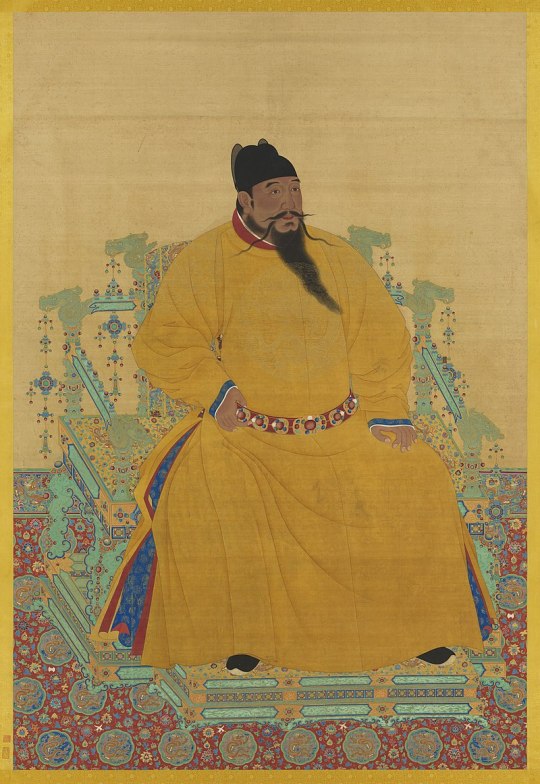
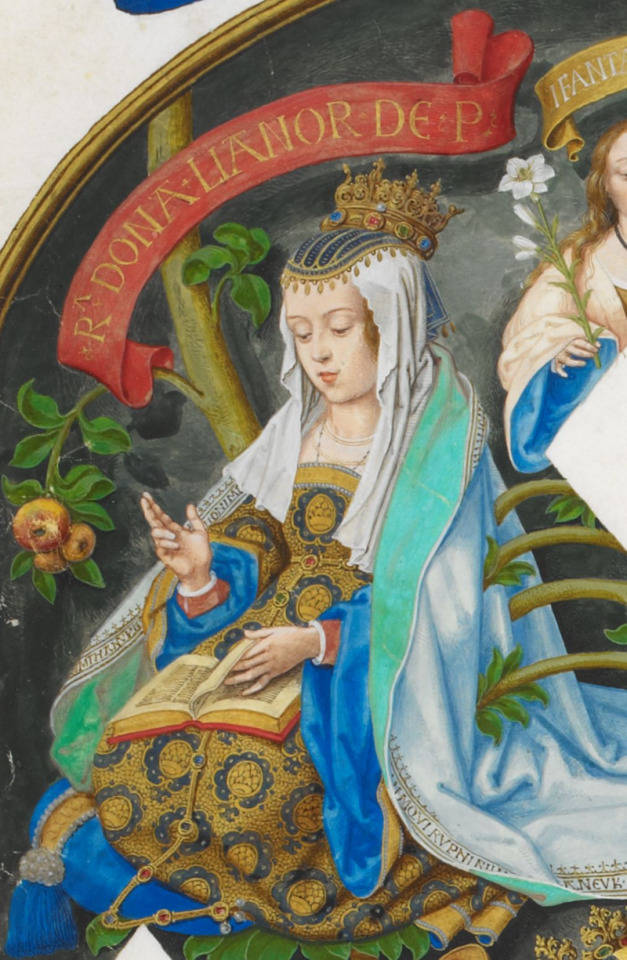
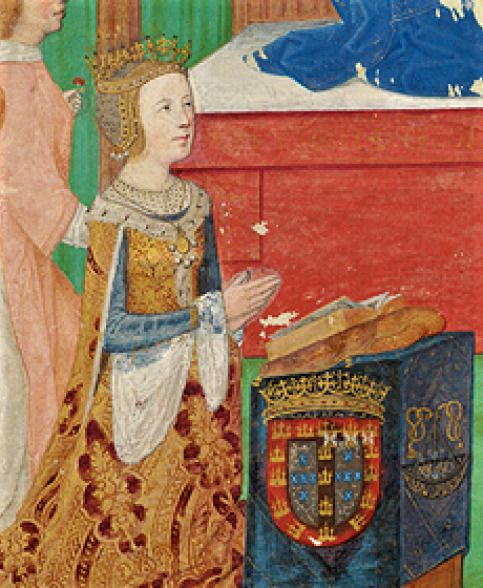
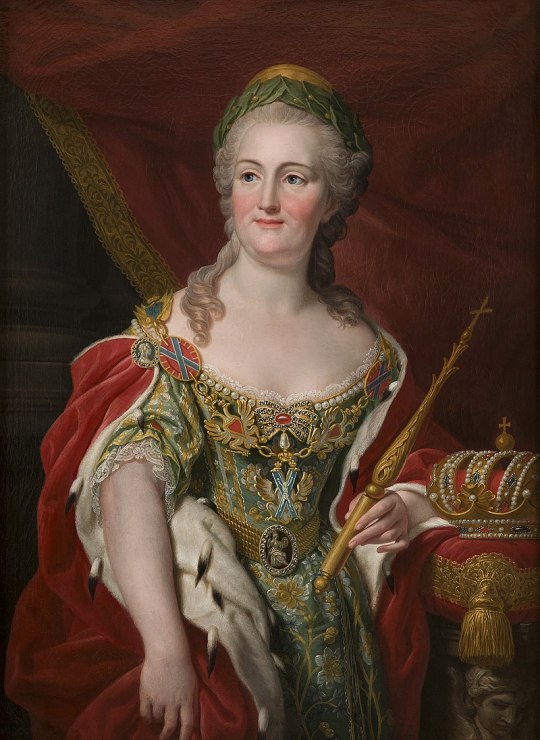
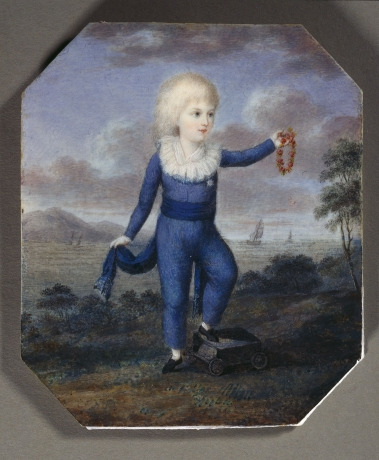

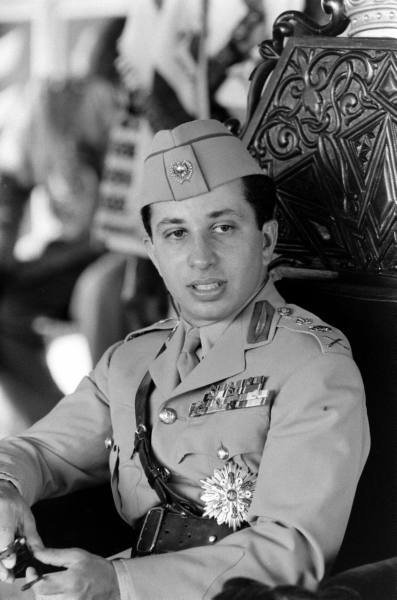
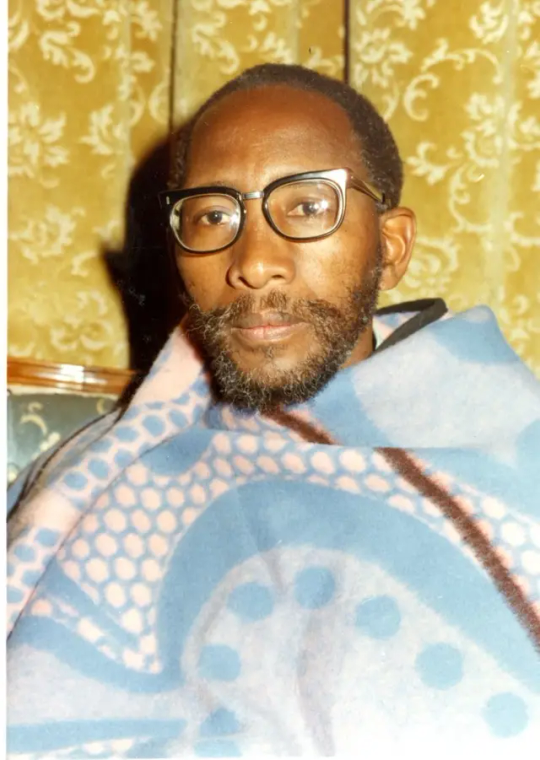
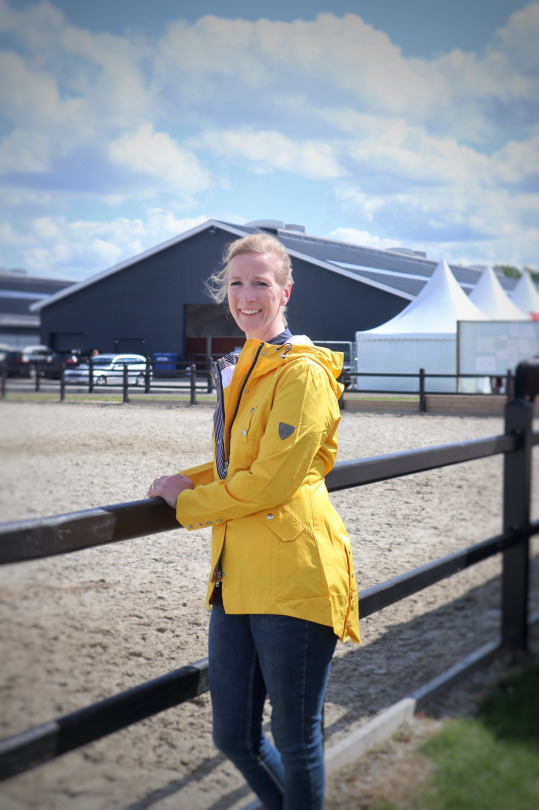
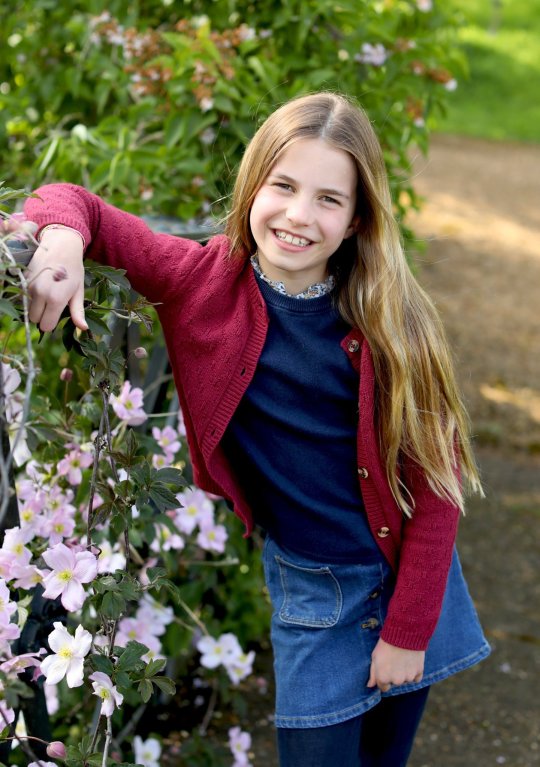
Royal Birthdays for today, May 2nd:
Yongle Emperor, Emperor of China, 1360
Eleanor of Aragon, Queen of Portugal, 1402
Eleanor of Viseu, Queen of Portugal, 1458
Catherine II, Empress and Autocrat of All the Russias, 1729
Alberto, Prince of Naples and Sicily, 1792
Helen of Greece and Denmark, Queen Mother of Romania,1896
Faisal II, King of Iraq, 1935
Moshoeshoe II, King of Lesotho, 1938
Nathalie of Sayn-Wittgenstein-Berleburg, German Princess, 1975
Charlotte of Wales, British Princess, 2015
#princess charlotte#eleanor of aragon#eleanor of viseu#catherine ii#catherine the great#helen of greece and denmark#yongle emperor#prince alberto#faisal ii#Moshoeshoe II#Nathalie of Sayn-Wittgenstein-Berleburg#royal birthdays#long live the queue
6 notes
·
View notes
Text
Day 6: Yolande of Aragon
Yolande of Aragon (also known as Yolanda de Aragón and Violant d'Aragó.)
Born: 11 August 1381 Died: 14 November 1442
Parents: John I of Aragon and Violant of Bar Duchess of Anjou and Countess of Provence Children: Louis III, Duke of Anjou Marie, Queen of France René, King of Naples Yolande, Countess of Montfort l'Amaury Charles, Count of Maine
Yolande was born in Zaragoza, Aragon as the eldest daughter of John I of Aragon and his second wife Violant of Bar, granddaughter of John II of France.
In 1387 a marriage offer came through the mother of the King of Naples, Louis II. At 11 years old she signed a document that disallowed any marriage promises made by ambassadors. In 1395 another marriage offer came from Richard II of England. After her father’s death, her uncle was convinced to marry Yolande to Louis. She was forced to retract her protest to the marriage.
Yolande and Louis were married on December 2, 1400 in Arles. Despite her initial rejection and her husband’s illness, they had 5 children.
As a daughter of a king, she had a claim to the throne of Aragon after her uncle’s death without an heir. The laws at the time favored male heirs, thus after two years without a king they chose Ferdinand the son of Eleanor of Aragon and John I of Castile. Yolande’s son, Louis, was the Anjou claimant to the throne, although his claim was excluded by the Pact of Caspe..
In the second phase of the Hundred Years' War, Yolande supported the French, particularly the Armagnacs. After the attack on the Dauphin of France by the duke of Burgundy, she and her husband refused the marriage of their son Louis to the duke’s daughter. She met with the Queen of France to arrange the marriage of her daughter and the third son of the queen, Charles.
When Charles became the Dauphin and his mother worked against his claim, Yolande became a substitute mother for the teenager. She protected him against plots, funded and helped his cause. Yolande removed Charles from his parents' court and took him to her residence where he received Joan of Arc. After his marriage to her daughter Marie she became his mother-in-law and was heavily involved in the conflict of the House of Valois. She succeeded in having him crowned.
As her husband was often away fighting in Italy, Yolande preferred to hold court in Angers and Saumur..
After the Battle of Agincourt in 1415, the Duchy of Anjou was threatened and Louis II had Yolande, their children and Charles moved to Provence.
On 29 April 1417, Louis II died leaving Yolande, aged 33, in control of the House of Anjou. Yolande acted as regent for her young son.
Yolande not only took care of the House of Anjou but also of Charles’s cause. Yolande supported Joan of Arc from the beginning and practiced political moves to ensure the success of Charles.
She retired to Angers and then to Saumur, where she continued to play a role in politics. From at least 1439 onwards Yolande took care and prepared her granddaughter Margaret of Anjou for marriage.
She died on 14 November 1442 at the town house of the Seigneur de Tucé in Saumur.
She is described as "the prettiest woman in the kingdom", a wise and beautiful woman and her grandson Louis XI of France described her as "a man's heart in a woman's body”.
#women history#women in history#french history#joan of arc#margaret of anjou#anjou#15th century#medieval#medieval history#1400s#france
4 notes
·
View notes
Text
Trixie

Trixie is a bold and free-spirited girl’s name of Latin origin. It could be originated from the Latin word Beatus, meaning ‘bringer of joy’, or ‘she who brings happiness’. Trixie could also be derived from the Latin word viator, meaning ‘voyager’, or ‘traveler.’
The name is considered a diminutive of names, such as Beatrice, Beatrix, or Patricia. Trixie is also associated with several saintly figures. Beatrice of Silva was a Portuguese noblewoman who founded the monastic Order of the Immaculate Conception. She was imprisoned in a tiny cell and finally escaped her imprisonment and took refuge in the Dominican Second Order monastery of nuns in Toledo. She is the patron saint of prisoners and is still venerated in the Monastery of the Immaculate Conception.
Blessed Beatrice d’Este was the daughter of Azzo VI of the Este family by his second wife, Sophia Eleanor, daughter of Humbert III, Count of Savoy. Beatrice became a Benedictine nun at Solarola near Padua at the age of fourteen, and in 1221 founded a religious house at the site of an abandoned monastery in Gemmola.
The name Trixie is often used as a nickname for Patricia. Hence the name is associated with Saint Patricia of Naples and might have been a descendant of Constantine the Great or related to the Roman Emperor.
Trixie can have several variants, including Trixi and Trixy. Trix can make a cute nickname for Trixie. The name has left a mark on popular culture. Trixie was given to several memorable fictional characters. Thelma “Trixie” Norton is a notable character in the television sitcom The Honeymooners. She is Ed’s wife and the best friend of Alice. She is depicted as an ordinary housewife and was portrayed by Joyce Randolph. Trixie is a blue plastic Triceratops in Toy Story 3 and served as the main character in Toy Story That Time Forgot and is one of the toys owned by Bonnie.
Trixie is wearing a civil war dress that is teal silver and cream. Her reddish hair is put up in the back. She has teal necklace and earrings also. DON'T FORGET HER MESHES SO SHE WILL SHOW UP CORRECTLY.
MESHES
The Arabian Nights Collection earrings and necklace-MURPHY
Scarlett O'hara dress-simna
Scafati Boots-Madlen
FemaleHair_AndrineFlowers and hair V2-simstrouble
DOWNLOAD
#sims 4#the sims 4#sims 4 cc#custom content#@madlen#@murphy#@simstrouble#@simna#@lana cc finds#@loveccfinds#@sim 4 finds#civil war
4 notes
·
View notes
Photo

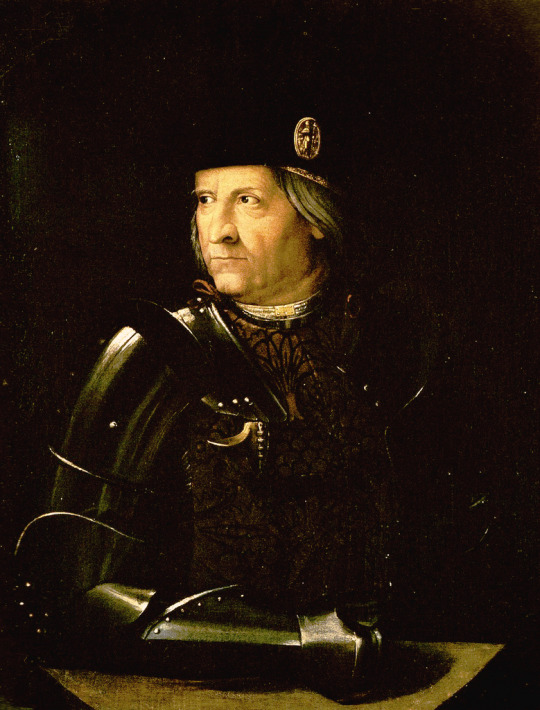
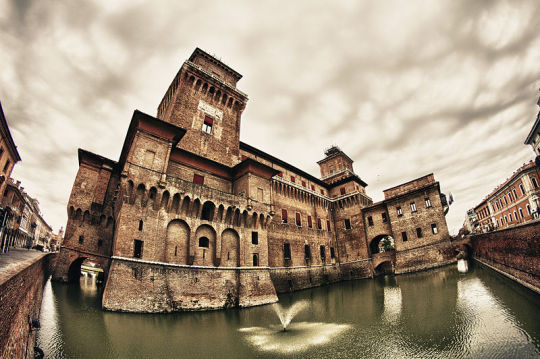
“ But a few days afterwards, while Duke Ercole was away from Ferrara, his wife was surprised by a sudden rising, the result of a deep-laid conspiracy, secretly planned by his nephew, Niccolo, a bastard son of Leonello d'Este. Niccolo's first endeavour was to seize on the person of the duchess and her young children, an attempt which almost proved successful, but was fortunately defeated by Leonora's own courage and presence of mind. The palace was already surrounded by armed men, when the alarm reached the ears of the duchess, and, springing out of bed with her infant son in her arms, followed by her two little daughters and a few faithful servants, she fled by the covered way to the Castello. Hardly had she left her room, when the conspirators rushed in and sacked the palace, killing all who tried to offer resistance. The people of Ferrara, however, were loyal to their beloved duke and duchess. After a few days of anxious suspense, Ercole returned, and soon quelled the tumult and restored order in the city. That evening he appeared on the balcony of the Castello, and publicly embraced his wife and children amid the shouts and applause of the whole city. The next day the whole ducal family went in solemn procession to the Cathedral, and there gave public thanks for their marvellous deliverance. A terrible list of cruel reprisals followed upon this rebellion, and Niccolo d'Este himself, with two hundred of his partisans, were put to death after the bloody fashion of the times. “- Julia Cartwright, Beatrice d'Este, Duchess of Milan, 1475-1497
#Leonora of Aragon#Eleanor of Naples#Eleonora d'Aragona#Ercole d'Este#Duchess of Ferrara#Duke of Ferrara#Italian history#Women in history#Men in history
8 notes
·
View notes
Photo




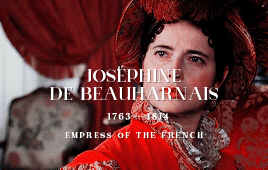
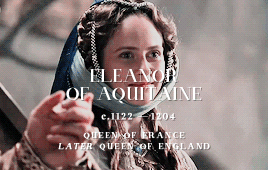
history + grandmothers of Europe (requested by anonymous)
#historyedit#perioddramaedit#documentaryedit#feminism#*#17th century#18th century#19th century#joséphine de beauharnais#eleanor of aquitaine#aliénor d'aquitaine#maria amalia of naples and sicily#marie amélie de bourbon-siciles#victoria of the united kingdom#maria theresa of austria#eleonore desmier d'olbreuse
513 notes
·
View notes
Photo
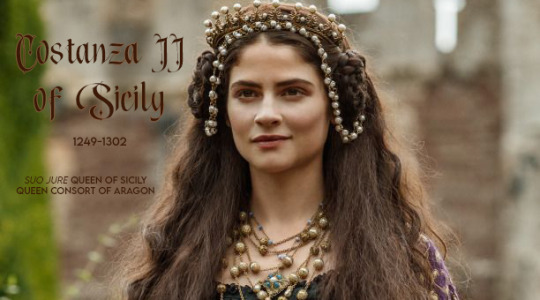
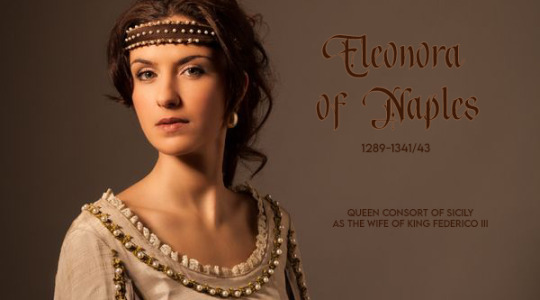
“Sicily’s women have always been shadowy figures, crouched quietly in doorways or gazing down the crowded streets from balustraded or shuttered windows. For most of the medieval period they have left no direct record of themselves, since, with a few exceptions, they could neither read nor write - and even the possession of literacy, for those few lucky enough to enjoy it, did not give one the right to act or speak independently. As a consequence, very few records survive to shed light on their activities, and virtually none of the records we have present the women in their own voices. In the intensely conservative society of Sicily, women lived their lives under tight constraints; the traditional roles that society gave them gravely limited their freedom to act and ours to behold. Local customs, in general, were designed to isolate and protect women from the outside world, to keep them safely ensconced in their fathers’ homes until they could be safely and just as absolutely ensconced in their husbands’ homes, or, for the devout and dowry-less, dedicated to God in a nunnery. Not until the Vespers era - an era inaugurated with a rebellion sparked by an Angevin outrage against a native woman - do Sicily’s women come into view with any meaningful detail of focus. Our view of them is still partial and imperfect, given the limitations of even this improved documentation. But the extant evidence holds a few surprises.The most visible figures belong of course to the aristocracy. After 1282, and as a result of it, Sicily’s queens played important roles in society. The Catalan dynasty placed the bulk of its claim to the throne on its marriage link with Constance, the last of the Hohenstaufens. Consequently, the right to inherit title and property through the female line was well established. Frederick’s and James’s father, although he had conquered the realm and had received the acclamation of the Communitas Sicilie, consistently emphasized his right to rule through his marriage to Constance; and Frederick too, as we saw earlier, asserted his inheritance of Constance’s patrimony, rather than his election by parliament, as the chief legitimation of his kingship. As queen, Constance began the practice of sitting in the MRC and taking her place in the king’s inner circle of advisers. Extant records show her working to reconcile the church to the new dynasty, to foster greater unity of action among Sicily’s contending factions and regions, and to educate the new ruling caste to Sicilian customs. When Peter left the island in order to tend to matters in Catalonia, Constance headed the lieutenancy council that governed the realm in his absence; and she continued to advise the throne during James’s reign. As late as 1296 her aid was still sought by those who wanted to influence decisions at court, although the extent of her influence by that time had clearly waned.Frederick’s wife Eleanor likewise was a member of the council and exerted a fair share of influence. As with Constance, this influence had more to do with economics than ideology. As independent ruler of the camera reginale, the queen controlled a large segment of the vital Val di Noto, the most important city in which was Siracusa, with a steady population of nearly 8,000 throughout the reign. Adding the other sites that made up the apanage, she ruled a population of some 20,000 individuals. Her camera was the site of two of the most important trade fairs - at Siracusa, beginning on the Feast of the Nativity of the Virgin, and at Lentini, at the Feast of the Ascension - and represented as well a significant venue for wine, grain, and salt exports. Siracusa itself, in fact, held a monopoly on all exports from the confines of the city northward through all the coastal territory of the Gulf of Augusta. So important had the city become as a trading center, especially for the eastern and southern trade routes connecting Sicily with Greece, Egypt, and Malta, that the Siracusan salma was made the standard measure for all agricultural produce in the eastern half of the kingdom. In 1299 the government awarded the city a toll franchise that freed its produce of the inland duties levied upon other domestic trade; the franchise was to be lost, however, if the land under the city’s control was alienated or enfeoffed. This resulted in a rather static social structure, since land seldom changed hands. In later years, when the queen wanted to reward anyone or felt the need to make additional grants in order to purchase loyalty, she circumnavigated the prohibition of alienating the land by granting instead various rights (pasturage, herbage, water access, etc.) over the land, but not the land itself. The general strength of the commercial economy, however, made Siracusa, and the entire camera, for that matter, an attractive site for the thousands who fled the decay and poverty of the Val di Mazara. It was the sole region in the kingdom that experienced an increase in its population, in absolute numbers, during Frederick’s reign.Eleanor held full powers of criminal and civil jurisdiction over the district, and, through her hired agents, administered an independent machinery of tax collection. Few records survive from her administration. But what evidence we have indicates that she took her responsibilities seriously, even though she did not always choose well in appointing her officials. A personal favorite whom she introduced at court in 1307 and to whom she entrusted some minor diplomatic errands, Pere Ferrandis de Vergua, proved to be a flatterer and opportunist, a corrupt official who wooed and wedded a series of wealthy widows and young heiresses. On Eleanor’s recommendation, the MRC appointed Pere Ferrandis royal tax collector for Caltavuturo, where his flagrant abuse of his position led to vehement popular protests and ultimately to his impeachment; and when Pere later was found to have forged a number of documents - most notably his first wife’s will, arranging a bequest of 2,000.00.00 to himself - he was banished from the realm. Ultimately, he conspired to murder Frederick, whom he blamed for his failure to win the position in society that he felt he deserved.Eleanor was intensely pious. From the day of her arrival in Sicily - she married Frederick as a stipulation in the Caltabellotta treaty - she threw her considerable energy into rebuilding thekingdom's shattered churches and monasteries, and to raising new houses, hospitals, and evangelical schools. She funded the construction of Castrogiovanni's duomo in 1307, according totradition, by selling the entire collection of her royal jewels. She generously endowed any number of religious houses, within her camera and without. In the area around Paterno, for example, shegranted lands, curial rights, and cash to the monastery of S. Maria di Licodia, in return for the monks' prayers on behalf of the royal family. The gift was prescient, in its way, since Frederick died inPaterno while en route to Castrogiovanni. Her advocacy for religious houses continued well after their founding and endowment. Especially in the case of nunneries, Eleanor remained involved in their daily lives by observing elections to abbacies, the recruitment of nuns, the regularity of their worship, and their treatment of relics. She visited nunneries throughout the realm, often with her children in tow, and regularly participated in their worship, showing an early preference for Franciscan houses.Above everything else, she seems to have considered it her fundamental responsibility to promote religious observance and moral reform. Although overt, specific evidence about her relationship with the evangelical movement is lacking, a number of clues survive that show her to have been an enthusiast for the Spirituals. We have seen already that she took seriously Arnau deVilanova's injunction that she and her handmaidens should perform public rituals in every duomo and hospital in every city they visited, dressed as personifications of Faith and Hope, "so that inthis way the people may have a vision [like that] of the Mother of God entering a place of misery to comfort those who are there." It was probably in such garb that she led the procession of the relics of St. Agatha around the confines of Catania, during the eruption of Mount Etna. She not only held vernacular readings of the Scriptures on Sundays and feast days, but she further commissioned a vernacular translation of the Dialogues of Gregory the Great, for the edification of the royal children, one of the few substantial texts in Sicilian dialect that survives from Frederick's reign. Even in a mundane duty like appointing a new bailiff to preside over her territory at Paterno her concern for the spiritual life of the community dominated all other considerations. When she appointed Ruggero Gala to be bailiff, in 1311, at the height of Sicily's flirtation with Arnau's prophesies of the kingdom's apocalyptic role, she specified that his first and foremost duty was "that he should take diligent care, if he should find anyone blaspheming against God, the Blessed Virgin, or the saints, or anyone speaking ill of the Royal Majesty, that he should take no sureties [i.e. promises to appear in court as summoned] from them, but should immediately seize their persons and take them captive to the justiciar of the province." Under Sicilian law, most accused criminals had the right to post bail and remain free until their trial; but the passionate atmosphere of the evangelical realm would permit no such freedom to those who were even rumored to be guilty of blasphemy. In lock-step with Arnau's teachings and the Ordinationes generates, the queen directed her bailiffs also to arrest anyone caught playing at dice or cards. But Eleanor, for as much as she helped to establish a general atmosphere of family concern and reformist piety, was merely one woman, and hardly representative of the majority.”
Clifford R. Backman, The Decline and Fall of Medieval Sicily. Politics, religion, and economy in the reign of Frederick III, 1296-1337, p. 285-290.
#history#women#history of women#women in history#historical women#aragonese-spanish sicily#Constance II of Sicily#eleanor of naples#myedit#historyedit#people of sicily#women of sicily#frederick iii of sicily
73 notes
·
View notes
Text





Empire style costumes at the Devonshire ball in 1897;
Aileen May (née Wyndham-Quin), Countess of Meath as Hortense de Beauharnais, Queen of Holland
Catherine Dorothea Mary Grosvenor (née Simeon) as Marie Louise of Austria, Empress of the French
Princess lowestain as Pauline Bonaparte Borghese
Thérèse (née Kinsky), Countess Clary-Aldringen as Pauline Bonaparte, Queen of Naples
Sir Charles Edward Cradock-Hartopp, 5th Bt as Napoleon I; Millicent Florence Eleanor (née Wilson), Lady Cradock-Hartopp (later Countess Cowley and Mrs Duberly) as the Empress Josephine
#empire style#historical fashion#mdpcostume#masquerade#fete#devonshire ball#19th century#19th c. costume#early 19th century
286 notes
·
View notes
Text
Eleanor's Kitchen
Book: The Royal Heir Book 1/The Royal Romance series
Rating: G
Pairing: None. Queen Eleanor & Signore Francesco friendship. Mention of Joëlle Theron & Queen Eleanor's friendship.
Summary: After a visit from one of his mother's old college friends, little Liam realizes he doesn't actually know as much about her as he thinks. (Eleanor's Kitchen)
Word Count: 3, 261 words.
Tagging @choicesficwriterscreations for Fics of the Week.
Choices May Challenge (Day 8) - yellow | Mothers | "do you trust me"? (@choicesmonthlychallenge)
Chapter 2: Spaghetti al Pomodoro
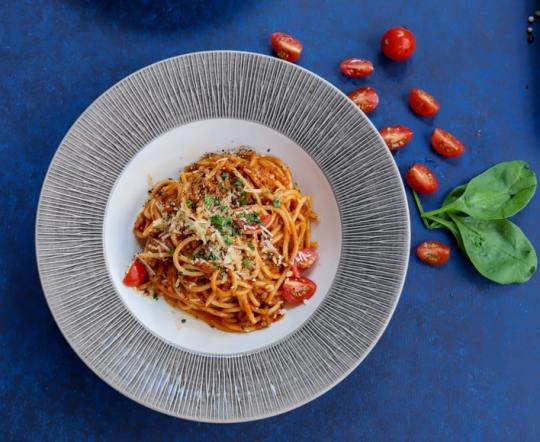
There are many moments when Liam thinks he's seen his mother at her happiest.
When she sees him and Drake, weaving their way through the still-in-construction garden, their shins darkened by mud. When Leo briefly drops his disinterested-teenager demeanor, and actually looks happy to be at home. The now-rare days when she and Father go a full day without disagreeing on something (alright...maybe not that. You can still see her eyes nervously darting, like she's aware that the day isn't over and there's still time for things to go wrong). When her projects seem to take off. When people appreciate her new garden. When she goes to the public library. The rare times she gets to cook.
None of that compares, Liam realizes now, to the shine in her eyes at the sight of a carton of ripe, red, oval-shaped tomatoes in the palace.
As Mum closes her eyes, breathing in the sweet scent of the tomatoes, Liam surreptitiously picks up a note that seems to have fallen from the box.
Nori,
Got this straight from Zio Guiseppe's farm. He still remembers you! Keeps telling me how often you wolfed down their sfogliatella first time you visited. He even offered to just send you a bottle of homemade sauce to save time...but I told him if I did that you'd kill me!
Here's to serving your sons real pasta with real pomodoro, not those pathetic pink travesties you Cordonians call tomatoes.
Franci.
Mum sniffs in frustration when she finally reads the note. "I may be Cordonian now," she murmurs as if Francesco de Rosa himself is in the room, "but on the subject of tomatoes I will never be anything but Auvernese."
Liam frowns in worry. For the past year, Mum's home place hasn't even been mentioned in the palace. If this ever reaches Father's ears there will be hell to pay.
So instead of stoking the flames by asking his mother what's so special about Auvernal's tomatoes (not that he likes tomatoes, anyway, unless they're cherry tomatoes - the bigger ones always make your mouth pucker in the worst way, and Mum always needs to drown them in fresh herbs to make them taste halfway-decent), he asks about Uncle Franci instead.
"When did you go to Naples, Mum?" They've gone to Capri, they've gone to Venice, they've seen the Colloseum at Rome, he's even seen Father and Mum meet the Pope - all veiled and dressed in black - at the Vatican. He knows Napoli is where Uncle Franci stays, with Aunt Perizaad his wife - and they've come over to Cordonia a handful of times - but Liam can't for the life of him remember Mum ever going there!
"Oh, that?" Mum sounds a little surprised, almost as if she's just remembered something that never occurred to her before. "Of course you wouldn't know, sweetheart. I was still in university then."
Liam's eyes grow round as saucers. "You met Uncle Franci in college?"
Mum's laughter tinkles like glass, light but also a little hollow - her smile only half-there. "I met many people at college. Some of them you see almost every month."
"Really? Do you have pictures, Mum?" It's hard, to think of a time when his mother wasn't a queen, wasn't the woman on his Father's right side, wasn't the woman who considered this palace her home. Wasn't his mother.
Until now, he's never had to think about what Mum's life looked like before all that. Almost as if she emerged from the earth of their Capitol, like the goddess Venus did atop a shell from the sea. But Mum's eyes light up with a need Liam cannot name yet, so when she asks him if he'd like to see them right now, he says yes.
And he's excited at first, truly. He wants to see all these memories that seem to bring her so much joy. So he sits through thousands of pictures (Mum and Father. Mum and Global Leaders. Mum and a delegation of Applewood farmers. Mum and himself, now as a small child. Now as a toddler. Now as a baby, bawling his head off in a very uncomfortable christening robe. Mum and a very young, very scared Leo perched atop her lap). And as each yellowing album-page takes an agonizingly slow step back in time and Liam's childish enthusiasm begins to flag...Mum's own anticipation dims a little bit more, the dewy joy that lit up her entire face when she first saw those tomatoes slowly fading.
But then they're interrupted by the palace staff for teatime. And then they're expected to see Ana de Luca, Trend's newest and most popular interviewer, about a photoshoot. Then by the time they're done with all that, Drake runs to him, panting in exhilaration, telling Liam it's time for them to play.
And Liam runs, forgetting instantly all albums he's left behind and all the questions that led his mother to show them to him, too caught up in the promise of his own childhood adventures to wonder about her youth.
Eleanor shakes her head, chuckling fondly - tiredly - at the fading shadow of her son and his best friend, racing madly through the halls without another care in the world, before she puts the albums away.
--
"Mmm," Uncle Franci takes a seat next to Liam, greeting the smell of spaghetti slathered in tomato sauce with a sigh of appreciation. He'd called in last week, mentioning to Mum that he had work at the Capitol; to which she immediately suggested he drop by for lunch. "Smells just like Nonna's. I bet Pari gave you that recipe. But cherry tomatoes?"
Mum lets out an unladylike snort. "Just because they're not in your Nonna's recipe doesn't mean no Italian has ever used them."
"But these are Cordonian tomatoes. You may have the best baking apples but with respect to this one ingredient we beat you hollow."
"Pssh! Those are different. You haven't even tried our cherry tomatoes yet." Mum gets even more passionate in her defense of Cordonian produce, a strand or two of her hair easing themselves off her neatly-tied bun as she spritedly argues.
Liam breathes in a whiff of the pasta dish while the two keep sparring. He won't lie: it does look, and smell, divine. The basil smells fresh, the sunlight streaming from the windows casts a silky gleam over the already-thick sauce on the spaghettoni. The subtle pungent perfume of crushed garlic teases his nostrils. The mini-tomatoes that seem to offend Uncle Franci so much have a slight char, the blackness standing out against all the bright colours of the dish.
He's just not sure the pasta will taste as good as it looks, because they're tomatoes.
But Liam is sure of one thing. He's never enjoyed being in the kitchen with his mother, as much as he did when she was making this sauce. She's always been one to sing, do a little dance, tell a story, in the middle of cooking. Fairytales, old myths, childhood memories, little anecdotes of his life with Father and Leo, before Liam came along. Little folk legends she's read about in the public library.
But since she got that carton of tomatoes from San Marzano sul Sarno, her stories have started sounding different. They're brimming with love, but with a sense that she's lost something too. She talks about her father's wonderful, forever-fertile farm, that grew everything from root vegetables to dragonfruit. About her time at university, learning Cultural Studies and meeting a young Italian batchmate named Francesco de Rosa - now an up-and-coming Italian politician. Mum said they'd bonded instantly, teasingly calling each other "Volcano Children".
Volcanoes? Liam whispered as Mum sweated the garlic, why volcanoes?
Volcanic soil was very important to both our childhoods, she told him, sighing wistfully, Uncle Franci's birthplace isn't too far from Mount Vesuvius. Your Grandpa's farm was very close to Mount Ionia, which is our dormant volcano. The ash from all those ancient eruptions does something to the soil over time.
What does it do? Uncle Franci's tomatoes, crushed yet still a little whole, now joined the garlic-infused oil, what does that do to the food?
Mum didn't answer. She'd just tasted a spoonful of sauce, closing her eyes and smiling, occasionally moving her tongue around her palate. As if the taste of the tomatoes themselves transported her somewhere else.
He sees the same expression on both her and Uncle Franci's faces now, at the dinner table, feasting on the pasta. Perhaps a hint of surprise in Uncle Franci's expression.
Liam shifts in his seat, embarrassed; his plate is the only one left untouched.
Just one bite, he promises himself, lazily twirling strands of spaghetti around his fork. Just a little bit, and if I can't get through the meal I can complain of a stomachache. Mum will understand.
That one bite releases a whole bouquet of sensations all at once. The pasta is luscious, the tomatoes are shockingly sweet and vibrant, their richness unfurling over his tongue in a way that coats his entire palate. He's never had a tomato that tasted like this. The garlic and basil play hide-and-seek with his senses, only occasionally making their presence felt. It's almost like there's no need for the flavourings to take centerstage!
"More, Liam?" Mum says, her lips unfurling into small smile at the sight of his almost-empty plate.
"Yes please," Liam responds immediately, before realizing both their eyes - amused, a little relieved - are trained on him. "I mean, er, it's nice."
"Perks of living near a volcano," Uncle Franci says, grinning.
Liam giggles, twirling pasta around his fork into a huge cocoon, "Mum said so too."
"She's not wrong, cucciolo mio. It's all that volcanic ash. You won't believe how rich with minerals that soil is."
Liam nods even though some of the phrases are a little hard to understand, his mouth for once stuffed with pasta and tomatoes. He understands enough. But Uncle Franci's praise for Mum's pasta dish has only begun.
"I hate to say this, but I was wrong about the cherry tomatoes, Nori. Charring them really made all the difference!" he lets out a dramatic sigh. "Pari will be so smug when she finds out."
"Once a Cordonian, always a Cordonian, I'm sure," Mum laughs, a light, spirited one that Liam hasn't heard in a while. "She's in Bethulia right now, isn't she?"
Uncle Franci bristles slightly, and Mum purses her lips in response. Liam pretends not to know why; he's heard whispers about Bethulia often over the years, but has only visited the estate once. Its current owner, Baron Cyrus, is younger brother to the then-presumptive heir, who had left the estate years ago to start a new life in metropolitan China. She hasn't been seen since. "Yes."
Nervously, Mum runs a nail over the pristine tablecloth. "She'd told me her cousin Lorelai had come down for a sudden visit."
Uncle murmurs beneath his breath "You can imagine how well that turned out," before turning to Liam and saying - his voice falsely bright - "Did you know, Liam, that I met Aunt Pari through your mother?"
Liam straightens up in his chair, his eyes suddenly brightening, "Really?? You never told me that, Mum!"
Liam knows how fond Mum is of Aunt Pari, but the smile on her face remembering their first few months looks extra special. "Pari was my junior in university...she used to meet me every week for help with class notes. We grew quite close."
"Which is where I come in," Uncle Franci interjects, grinning, "because I was your Mum's roommate, and that's how Aunt Pari met me. Might I add I was the more fun of the two of us; no wonder she stayed around..." Mum rolls her eyes, suppressing a smile. "Both Pari and your mum always carried cameras around. Took pictures of everything and everyone. I actually have a few of those pictures on me right now," he says, passing a conspiratory glance Mum's way. She says nothing, but when Liam steals a glance her way he can see her mouth the words thank you.
Guiltily, Liam remembers they'd never gone back and checked Mum's albums, after the cart of tomatoes had come. The few times he'd remembered, something else had always come up.
"Can I see?"
Uncle Franci is still smiling, but the smile looks different now - softer and more thoughtful. Briefly, he places his hand on Liam's hair. "Of course, cucciolino mio."
The pictures are beautiful, dappled in sunlight, brimming over the four corners of the photograph with bright, happy faces. Here is one of Mum standing at the center of a university campus, holding a bouquet of sunflowers, her eyes crinkled in laughter as Uncle Franci and Aunt Pari mischievously kiss her cheek from either side. And another of Mum and Uncle Franci in plain cotton pyjamas - a far cry from the luxurious sleeping robes she and Father wear - wolfing down pasta, their faces nearly smeared with sauce.
"You have no idea how desparate we both would get for a good tomato pasta. We were so homesick that first year." Mum says, chuckling fondly at their younger selves.
"I'd still argue our San Marzano tomatoes have the slightest edge over your Auvernese ones!"
"Shut it, you," Mum lightly punches Uncle Franci in the arm, her eyes a tiny bit watery, as Liam leafs hungrily through the other pictures. This is a side of his mother he's never seen - and now that Uncle Franci has shown it to him, he can't help but want to know more.
The next photograph shows only a paper, with writing that Liam instantly recognizes as his mother's swirly, almost-calligraphic script. He reads most of the title easily, as well as her name ("Eleanor Moon") only faltering when he reaches the last word.
Breaking Bread: Exploring the History and Practice of Mediterranean Gas...Gas...Gastro...
" - gastrodiplomacy," Mum helps him, rubbing his back in encouragement. "It means you look at how people from different places cultivate alliances and friendships through food."
Liam looks up from the pile of photographs. "Like you and Uncle Franci?" The memory of today's tomato pasta still sends tingles through his tastebuds.
Uncle Franci guffaws in response. "More like your Mum and every soul she meets."
"This was my thesis - that's a research paper you present in the course of getting your degree. Mine and Aunt Pari's was in Cultural Studies, Uncle Franci did his in International Politics. Your father pursued the same degree...but he was a fair bit older than any of us." There is a glow of pride on Mum's face, the same kind that he often sees when an initiative of hers succeeds. "This was the most frustrating, most rewarding, tastiest research paper I'd ever written."
"We both gained weight when you wrote that one," Uncle Franci laughs, before setting the final photograph on the table, "oooh...I think Liam might recognize a person or two in this picture!"
The last picture shows Mum standing behind a huge banner, in a bright purple sundress and a hat, standing next to a vibrant black woman dressed in sunshiny lemon-yellow. They fashion their poses in a way that looks poised, yet casual enough so the onlooker deems them approachable. They wear their best smiles, but their eyes are razor-sharp with purpose. In blue and silver letters, the banner reads
Joëlle Moreau for President!
Eleanor Moon for Cultural Secretary!
Liam draws a deep breath. "Mum, is that -"
"Yes, sweetheart," she responds, eyes softening at Joëlle's deep brown curls, her warm, open smile. "You know her now as Duchess Joëlle, House Thorne. We won that year, too."
"Kiara's Maman," Liam murmurs, remembering it's been months since he's seen the playmate he's been playing soccer and "diplomatic doll games" with. "I didn't know you were in college together too!"
Uncle Franci lets out a small chuckle. "There's a lot of things you don't yet know about your mother," he tells Liam, sitting on his haunches so he can look the young child in the eye, one hand on his shoulder, "but I promise you, finding out will be fun."
Liam takes that little lesson to heart long after Uncle Franci leaves, making promises to arrange for Aunt Pari to visit soon. There is something about Mum's face in those pictures that tugs at him: expressions and hand gestures that he can't even remember seeing from Mum since the time he was born. Things about her he never knew, he never even thought to know. And the look on her face whenever he asks a question about them...that's a happiness Liam wants to grab with both hands and store in a bottle, so he can preserve the glow on her face and the shine in her eyes, forever.
--
Liam likes to keep this a biweekly ritual, Eleanor realizes three weeks into Francesco's last visit. The first time they went back to that cabinet of albums, he looked closely at the pile as if to imprint which ones had all the family pictures, and which ones featured his mother alone, imprinting them in his memory to save time. Since then, he's walked gingerly to the cabinet each time, plucking out whichever of his mother's albums he's in a mood for. Seeing him pore over each photograph, in awe, makes Eleanor's heart swell.
Something in her hurt inside when Liam left those albums aside...when it looked like he didn't even show interest in the parts of her that had little to do with him or their family. It's childish, she knew. She should be the mature one, she should understand how difficult this life is for any child to navigate. But it didn't stop the hollow feeling inside from constantly creeping in.
Liam points to another photograph now, chirping exitedly his guesses for who the figure in the painting at the background might be (He's right). This photograph is of Joëlle, dressed in a silky maxidress in one of those bright colours she used to wear so well, the head-wrap covering her hair, boldly patterned. She is holding the tip of a paintbrush to her chin, gazing at an oil painting of a young black man in a waistcoat, the fingers of his left hand fiddling with a cufflink, his eyes intense and vulnerable all at once. Jo's features are soft and delicate as she continues gazing at the painting, her eyes already brimming with a million dreams. Eleanor can almost smell the turpentine in Jo's small studio emanating from the picture, if she closes her eyes long enough.
Joëlle is perhaps the only courtier she's this close to... the only one she knows she can trust blindfolded. She won't forget how deeply troubled she'd been all those weeks ago, how much gibberish she'd poured out onto her old friend from Castelserraillan over phone. But somehow Joëlle figured out the problem she'd been plagued with, because Eleanor could understand it herself.
Prince Liam will only show interest in seeing what you are passionate about showing, Elle. Jo had told her in her deep, soothing voice, I've seen you in the past few years, followed your news in the past months. You've been spending far too long trying to be everything to everyone. The perfect Queen for Cordonia. The perfect wife and consort for the King. The perfect mother for your sons. Where are you in all this?
It was a simple enough question; it still stunned Eleanor into silence.
We may be queens and wives and mothers, Elle, was the last thing she said before she kept the phone, but we owe it to ourselves, and to our children, to remember - always - that we are more than that.
Eleanor runs a thumb softly over Jo's face, her heart twisting with love. They meet regularly, she knows, but it's never the same. It's been too long since they've sat down for a heart-to-heart chat. Since they've giggled over the precocious younger children's games together.
Tomorrow, Eleanor promises herself. Tomorrow she'll call Joëlle, ask when she's free. Have her come over. Her youngest could join in, keep Liam company. It'll be a little like the old days, Eleanor whispers to herself, her spirits already soaring.
But for now... they'll shut the albums, keep them neatly back in the cabinets, and have lunch.
It's Liam's new favourite today. A simple tomato pasta.
--
Italian Words:
Zio - Uncle
Sfogliatella - a shell-shaped filled Italian pastry originating from Campania. It means "small, thin leaf/layer", as the pastry's texture resembles stacked leaves.
Pomodoro - Tomato
Cucciolo/Cucciolino mio - an affectionate term used for young boys (typically refers to a young animal like a young puppy or a young kitten - in this context Franci means "little cub" since the lion is such an important royal symbol)
Author's Note: Inspired by a line in Liam's Book 1 date scene, about how he used to enjoy simple tomato pasta as a kid, and another line about Franceso, the Italian statesman, being a friend of Eleanor's. Takes place roughly a year after the events of Ch 1, so Liam is over 7 years old.
Recipes for Spaghetti al Pomodoro:
Chef Carlo Cracco
Vincenzo's Plate
#choices fanfic#king liam#prince liam#eleanor rys#the royal romance#the royal heir#trr#trr fanfic#series: eleanor's kitchen#cfwc fics of the week#choicesmonthlychallenge
37 notes
·
View notes
Photo






Favorite History Books || Sex With the Queen: 900 Years of Vile Kings, Virile Lovers, and Passionate Politics by Eleanor Herman ★★★☆☆
It was never adultery alone that did in a queen, or the fact that she did not resemble the Virgin Mary, or that she had polluted the royal bloodline. It was politics. If the queen followed the traditional pattern of bearing children, embroidering altar cloths, and interceding for the poor— pious duties that the Virgin Mary would likely have approved of—even if she took a lover she was usually left in peace. There was rarely reason to shoot down a political nonentity at court. But an intelligent ambitious woman who spoke her mind and built up a faction was always open to the accusation of adultery by her political rivals, whether the accusation was true or fabricated. Adultery charges offered the accuser many benefits. The very mention of adultery suddenly cast doubt upon the legitimacy of the offspring of a suspected queen, possibly rendering them unfit for the throne and opening the door to other ambitious candidates— usually the accusers themselves.
In 830, Judith of Bavaria, the second wife of Louis the Pious, found herself accused of adultery with a handsome court chamberlain. The accusers were her husband’s three sons by his first marriage who feared that Judith would influence their aging father to name her son, Charles, as his heir. Bristling with weapons, the three brothers forced their father to abdicate and imprisoned Judith in a convent. We don’t know if the queen committed adultery or not; we do know that the missiles of her enemies hit their mark and she was removed.
... Character assassination which had proved so effective in the ninth century was alive and well a thousand years later. Napoleon, who hated the virtuous and beautiful Queen Luise of Prussia for egging her apathetic husband on to defend his country against the French, twisted her admiration for Czar Aleksandr of Russia into a slanderous story. The handsome blond czar had visited Prussia in 1805 and an instant bond sprang up between the czar and the queen. When French troops marched into the vacated royal palace in Potsdam, Napoleon was delighted to find Aleksandr’s portrait hanging in the queen’s bedroom. He did all he could to tarnish the lady’s unblemished reputation and make her bumbling husband, King Friedrich Wilhelm III, look like a cuckold. Stories of the pious queen’s sordid affair with the czar haunt her memory to this day.
It was harder for Napoleon to blacken the reputation of Louise’s aunt, Queen Maria Karolina of Naples, who had had numerous affairs with courtiers and a decades-long affair with her top minister. What outraged the prudish French emperor received only a shrug and a wink from the rowdy Neapolitans. Stymied in his efforts to ruin the queen’s reputation, Napoleon invented the story of a lesbian affair between Maria Karolina and her friend Emma, Lady Hamilton, the wife of the British ambassador and later the mistress of Admiral Horatio Nelson. Emma, the conqueror learned, would tiptoe up a secret stairway to the queen’s apartments, probably to deliver dispatches from British allies or perhaps just to avoid palace protocol and enjoy a cup of coffee. But Napoleon saw the secret staircase as proof of unnatural vice. Unfortunately for the French emperor, his dart did not hit home; the raucous Neapolitans were equally undisturbed by rumors of the queen’s lesbianism.
Some Italians gladly strangled erring wives with silken ribbons, but many more were cavalier about sexual escapades. When the theocrat Savonarola, who had held a moral stranglehold over the sex lives of Florentines, was burned at the stake in 1498, one high-level magistrate, eyeing the rising flames of the pyre, heaved a heavy sigh of relief. “Thank God,” he grunted. “Now we can return to our sodomy.”
Indeed, of all European nations, the king, court, and country of Naples was the least disturbed by stories of queenly adultery. When a stroke felled the sixty-one-year-old queen Maria Karolina in her sleep in 1814, her husband, King Ferdinando, loudly proclaimed that his forty-four years of marriage had been nothing short of martyrdom, and within two months he married his young mistress, Lucia Migliaccio. Ferdinando’s son, Francesco, sharply rebuked him for marrying a woman known to have enjoyed so many lovers. But the king, laughing, replied, “Think of your mamma, my boy!”
114 notes
·
View notes
Text
Everything wrong with Spanish Princess-1x07
The fictional Rosa leaves. Lady Pole attempts to steal.
Mary Rose only turned 12 (the age lady Margaret was when wed), in 1508. Not in 1506. Not checking timelines, again! I mean using wiki, you’d know.
There are even online apps, where you put the date of birth, date something is happening and it calculates it for you!
Catherine is denied entrance into court. When she actually lives in it!
(Ok on and off, and she changed residences to her discretion, as Henry VII was being nice to her! So this is ridiculous.)
Eleanor and Harry’s bethrohal has never actually happened. And she was born in 1498. She’d be 11 when his father dies. She was not already fertile in scenes they talk to her as so, certainly not in entire season 1. This is set before Catherine is made ambassador in 1507, so Eleanor should be less than 9! Certainly too young to be wed, to be considered as fertile already.
(Especially by lady Margaret, who herself was 12 when she was wed! And strongly advocating for her granddaughter to not be wed so young!)
And why would prince Harry go to Spain to wed her, she would go to him! To England, and from Netherlands! Lady Margaret lies to Catherine about wedding of her grandson.
And true by this time, Harry repudiated the match in secret in 1505. (another thing they missed).
Henry VII didn’t ignore Catherine, but he didn’t considered her as bride either. They tried to wed him to Joana of Naples, but he wasn’t really into it. And he appeared to be for strongly for the match to Margaret of Austria, but she was against it.
Even if ships in London didn’t sail to Spain, England had way many ports, prince could sail from. Lazy writing!
Harry being so much in love?! Yes, he wished to rescue Catherine from her misery, however love-boy they present is wrong.
By the way, Catherine should be complaining to her father about her debts, increasingly desperate to pay them off. in 1506 already.
Lady Margaret would not leave it be if she found Ovietto is muslim. They weren’t as religiously tolerant, as they make it so(neither English nor Spanish Princess). They’re setting up lady Margaret to be villain again. Though seemingly she is being tolerant, she is in fact making him take item she then will claim he stole, not being genuine. Ovietto is spying for her. Lady Margaret Pole is sending her children to her relatives(as was common practise at those days), and walks into lair of traitors. Why do people think only when people were desperate they sent their children to become monks and nuns? Its such false narrative.Many sent their children to monasteries because they simply were pious.
Boleyn’s daughters at court? Before 1507? Anne was born in 1507(and I will die on that hill). Mary also was too young for court!
8 pounds a month rent for Durham house, when she didn’t actually live in it by this point? So false! So no way, Catherine would shelter lady Pole.
Supposedly they live penilless and in penury, and yet we see them using wax candles instead of rash lights(you can tell because vax candles don’t make smoke and they were expensive, and they use plenty of them!)
Catherine dreams of Henry abandoning her for crown, prefering crown over love.She sees her niece Eleanor(who was 9 by this point, she looks way older), he burns her letters she is on boat obove waterfall, about to die.We didn’t need that dream to understand Catherine’s fear and uncertain future.
Catherine is made ambassador of Aragon, after Philip dies. While Ferdinand says they all loved Philip and that Juana is falsely accusing him of poisoning Philip, he was actually not fond of Philip at all. He remarried to keep him away from crown of Aragon. So are they setting him up as liar?
(Oh by this point Ferdinand and Germaine of Foix would be long married, actually prior to visit of Juana and Philip to England. )
Seems so to me because Juana acts sane and was imo in real life not half as mad as people around her made to be. She was also pregnant when Philip died.
But yes, Ferdinand regained control of Spain. However Catherine would still consider her sister a Queen. De la pole by that point was handed over to English, Charles V was 7 when Catherine was made ambassador, not eight. (why do they keep having these stupid timeline mistakes?!)
And Ferdinand II of Aragon only had one of his grandchildren in his care-Ferdinand, who was born in Spain. Rest of them were in Netherlands, and were closer to hands of Emperor than Ferdinand’s. King Ferdinand couldn’t boycot match between Eleanor of Austria and prince Harry. This is big lie!
As is England needing Spain to be saved from France. (It was other way around. Ferdinand needed England to keep French at bay from his italian holdings.)
Catherine was in no position to make demands as ambassador and actually, and i hate to say it, but she wasn’t able to validly argument her case, because of circumstances created by her father and by ambassadors, and offiicals in Andalusia.
Hence all of this-oh bitches, you’re going to jump to my tune now-is total crap. (although during Catherine’s dowagers years there were several of very rude conversations between Henry VII and spanish ambassadors. But they completely skipped over all of those interesting stories!)
Catherine might have been treated bit more nicely upon becoming ambassador(actually way prior too), however she still wasn’t allowed to do as she pleased, still didn’t have access to prince. Like how more can you lie about what has happened?
Especially since the ceiling fell on the prince, his father once again became too overprotective-did we get that scene in TSP? No!
Lady Pole is pledging to become traitor-not supported by any records.
Also de la pole by this point was in English prison! Rest of his plotlines and his supporters’ is false!
Catherine’s new chambers are this bad?! No improvement whatsoever.
Catherine saiyng lady Margaret would be Queen if she wasn’t woman, is so crazy! Wouldn’t happen in real life, neither of them would think that way.
Mary Rose Tudor was born in 1496, she’d be 11 when bethrohal to Charles V was made official, she’d understand what was proxy marriage.
Ovietto gives lady Margaret names of traitors-who actually couldn’t be commiting treason because de la Pole was in prison and they knew cause was lost.
I especially don’t get how William Courteney is on that list, since he was in prison since 1504! And by the way, no way soldiers would break sancturary so easily! Get it to your skull, people still thought that breaking of sanctuary was wrong and people got reprimanded severly, sometimes dismissed from positions, if they did so.
7 notes
·
View notes